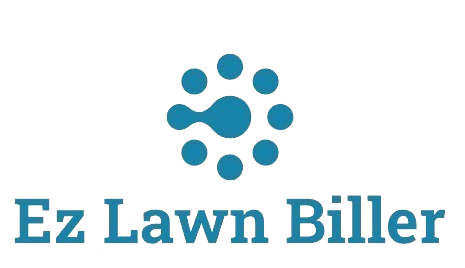Avoid These Common Optimize Routes Mistakes
Optimizing routes is crucial for any lawn care business aiming to boost efficiency and minimize operational costs. However, many companies often fall into common traps that can hinder their success. In this comprehensive guide, we will delve into the most frequent mistakes made when optimizing routes, providing you with practical tips and actionable insights to enhance your lawn care operations. Whether you’re an independent landscaper or managing a larger lawn care team, this article will equip you with the knowledge to sidestep these pitfalls effectively.
Understanding the Importance of Route Optimization
Route optimization in the lawn care industry is more than just a buzzword; it’s a game-changer. Efficient routing minimizes travel time, reduces fuel costs, and enhances customer satisfaction by ensuring timely service delivery. Did you know that companies that optimize their routes can save up to 30% on operational costs? This statistic highlights the significance of effective routing strategies.
However, despite its importance, many businesses overlook essential aspects of route optimization. By identifying these common mistakes, you can refine your approach and achieve greater efficiency. In this article, we’ll explore the pitfalls that can derail your routing efforts and provide insights on how to avoid them.
Failure to Analyze Historical Data
One of the most significant mistakes in route optimization is neglecting to analyze historical data. By not assessing past performance, businesses miss valuable insights that can inform better route planning. Historical data can reveal patterns in traffic, weather conditions, and customer preferences, enabling more accurate and effective routing decisions.
For example, if you notice that certain routes consistently take longer due to traffic congestion at specific times, you can adjust your scheduling accordingly. Utilizing a lawn service app that integrates historical data analysis can streamline this process, allowing for smarter route planning.
Overlooking Real-Time Conditions
Another common mistake is ignoring real-time conditions such as traffic, weather, and road closures. Relying solely on static routing can lead to delays and inefficiencies, which impact customer satisfaction and increase operational costs. Investing in a service company software that updates routes in real-time can be a game-changer.
Imagine you’re on your way to a client’s property and suddenly encounter a road closure. With real-time optimization tools, you can quickly adjust your route, saving time and maintaining your schedule. Incorporating these tools into your operations can significantly enhance your service delivery.
Neglecting Customer Scheduling Preferences
When optimizing routes, it’s essential to consider customer scheduling preferences. Many businesses make the mistake of treating every client equally without tailoring services to individual needs. For instance, some clients might prefer service during certain hours or days of the week.
By neglecting these preferences, you risk not only customer dissatisfaction but also inefficient routing. If a customer prefers morning service and you schedule them in the afternoon based on an optimized route, it could lead to delays and complaints. A lawn company computer program that incorporates client preferences can help eliminate this issue.
Inadequate Training for Your Team
Even the best route optimization strategies can fail if your team isn’t adequately trained. Often, businesses assume that their staff will intuitively understand how to implement new routing software or tools. However, this can lead to miscommunication and mistakes.
Providing comprehensive training on how to use lawn service software effectively is critical. This training should cover how to input data, interpret routing suggestions, and adjust routes based on real-time feedback. Ensuring your team is well-versed in these tools will significantly enhance overall efficiency.
Ignoring the Impact of Seasonal Changes
Another oversight is failing to account for seasonal changes that can affect route optimization. Lawn care services often vary by season, with different types of services being more relevant at different times of the year. Ignoring these seasonal shifts can lead to ineffective routing and scheduling.
For instance, during peak growth seasons, you might have more mowing services, while fertilization services might dominate in spring and fall. Adjusting your routes to reflect these changes is vital. A lawn company app that provides insights into seasonal service demands can help in adjusting your routing strategies accordingly.
Underestimating the Value of Customer Feedback
Customer feedback is an invaluable resource that many businesses overlook when optimizing routes. Ignoring the insights provided by clients can lead to recurring issues, such as delayed services or missed appointments. Actively seeking and analyzing feedback can uncover areas for improvement.
For example, if multiple clients express dissatisfaction with the timing of your services, it may indicate a need to revisit your routing approach. Utilizing a lawn service computer program that facilitates easy collection and analysis of customer feedback can enhance your service quality and routing efficiency.
Not Utilizing Technology Effectively
In today’s digital age, failing to harness technology for route optimization is a critical mistake. Many lawn care businesses still rely on outdated methods or manual calculations, which can lead to inefficiencies. Investing in a robust lawn billing software can streamline your operations dramatically.
Modern software solutions not only help in route optimization but also integrate billing, service tracking, and client management all in one place. This not only saves time but also reduces the margins for error. Consider tools that offer mobile access, allowing for real-time updates while on the go, ensuring your team has the latest information at their fingertips.
Overcomplicating Your Routing Strategy
Sometimes, the desire to perfect a routing strategy leads businesses to create overly complicated systems. While it’s essential to consider multiple factors, overcomplicating the process can lead to confusion and inefficiencies. Simplifying your routing strategy can often yield better results.
Start by implementing basic routing principles and gradually incorporate more sophisticated techniques as you become comfortable. Ensure that your team understands the routing process and feels empowered to make adjustments when necessary. A user-friendly lawn company computer program can help keep things straightforward and manageable.
Conclusion
Avoiding common mistakes in route optimization is crucial for the success of your lawn care business. By understanding the importance of analyzing historical data, accounting for real-time conditions, and addressing customer preferences, you can streamline your operations and enhance service delivery.
Additionally, investing in the right technology and training your team adequately can lead to significant improvements. Remember, optimizing routes is not a one-time task but an ongoing process that requires continual assessment and adaptation.
Take action today to refine your routing strategies and enhance your lawn care business efficiency. If you’re ready to streamline your billing and routing processes, consider exploring [Lawn Biller Software](https://ezlawnbiller.com/) for a comprehensive solution designed specifically for lawn care businesses.




